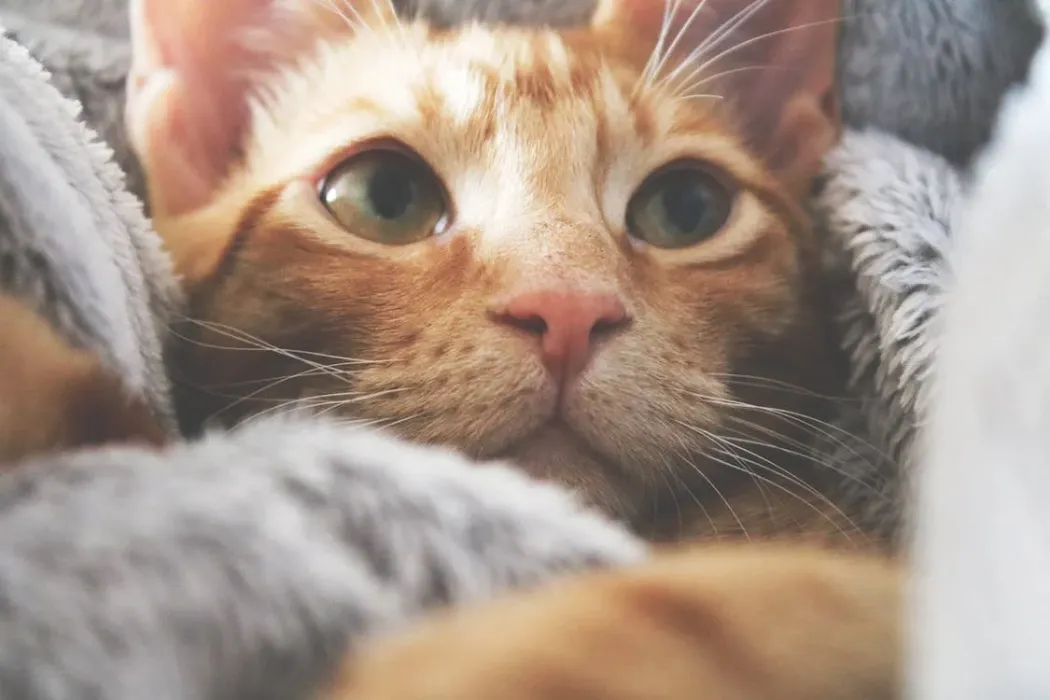Can indoor cats get fleas

Published by: CatsLib
5 Min Read
Other Pets: If you have other pets, such as dogs that go outside, they could bring fleas into the home. Fleas can easily hitch a ride on other animals and find their way inside.
Humans: Fleas can also be brought into the home on clothing, shoes, or other items if humans have been in areas where fleas are present.
Visitors: People who visit your home, especially if they have pets that go outside, could inadvertently bring fleas with them.
Infested Items: Fleas can lay eggs in clothing, bedding, or furniture, which can then hatch and infest your indoor space.
Wildlife: Even if your cat doesn't go outside, if there are openings or gaps in your home, wildlife like rodents can enter and bring fleas with them.
Vacations or Travel: If you travel with your cat or have them stay in a boarding facility, there's a small chance they could be exposed to fleas in those environments.
If you notice signs of scratching, biting, or excessive grooming, consult your veterinarian. These could be signs of fleas or other skin issues. While indoor cats are generally at a lower risk of flea infestations, it's important to remain vigilant and take preventive measures to ensure your cat's health and comfort.
How can indoor cats get fleas
Indoor cats can get fleas through various means, even though their exposure to fleas is typically lower compared to outdoor cats. Here are some ways indoor cats can get fleas:
Other Pets: If you have other pets that go outside, they can bring fleas into the home. Fleas can hitch a ride on dogs, for example, and infest the indoor environment.
Human Carriers: Fleas can be carried into the home on clothing, shoes, or belongings of people who have been in areas where fleas are present. Flea eggs, larvae, or pupae can stick to fabric.
Infested Items: Fleas can lay eggs in clothing, bedding, or furniture, and these items can become infested. Flea eggs can be dormant for a while and hatch when conditions are right.
Wildlife: Even though your cat is indoors, openings or gaps in your home could allow wildlife like rodents to enter. These rodents can carry fleas and introduce them into your living space.
Visitors: People who visit your home, especially if they have pets that go outside, could accidentally bring fleas with them.
Vacations or Travel: If you travel with your cat or have them stay in a boarding facility, there's a chance they could be exposed to fleas in those environments.
Remember that while the risk of fleas for indoor cats is lower, it's still important to remain proactive in prevention to ensure your cat's well-being.

My indoor cat has fleas what do i do
If your indoor cat has fleas, it's important to take prompt action to eliminate the infestation and provide relief for your cat. Here's what you can do:
Isolate and Examine Your Cat: If you have multiple pets, consider isolating the affected cat to prevent the fleas from spreading. Use a fine-toothed flea comb to check your cat's fur for adult fleas, flea dirt (tiny black specks resembling pepper), and signs of irritation.
Consult Your Veterinarian: Reach out to your veterinarian for guidance on appropriate flea treatment for your cat. They can recommend safe and effective flea control products based on your cat's age, weight, and health condition. Do not use products meant for dogs on cats, as they can be toxic to them.
Use Flea Treatment: Administer the recommended flea treatment as directed by your veterinarian. This might include topical treatments, oral medications, or flea collars. Follow the instructions carefully to ensure your cat's safety.
Treat the Environment: Fleas have a life cycle that involves eggs, larvae, pupae, and adults. They can infest your home environment as well. Vacuum your home thoroughly, paying special attention to areas where your cat spends time. Wash your cat's bedding, toys, and any other washable items. You may also consider using flea control products specifically designed for your home, such as sprays or powders.
Regular Grooming: Regularly comb your cat with a flea comb to help remove adult fleas and flea dirt. This can provide temporary relief and help prevent reinfestation.
Prevent Reinfestation: Continue using the recommended flea preventive products as advised by your veterinarian to prevent future infestations. Regular treatments are essential to keep fleas at bay.
Monitor for Allergic Reactions: Some cats are allergic to flea bites, which can lead to skin irritation and discomfort. If you notice excessive scratching, hair loss, or skin issues, consult your veterinarian.
Treat Other Pets and the Environment: If you have other pets, make sure they are also treated for fleas. Additionally, continue treating your home environment to ensure that any remaining fleas are eliminated.
Remember that flea infestations can be challenging to fully eliminate, so consistent and thorough treatment is necessary. If you're unsure about the appropriate course of action, or if the infestation persists despite your efforts, consult your veterinarian for further guidance.



